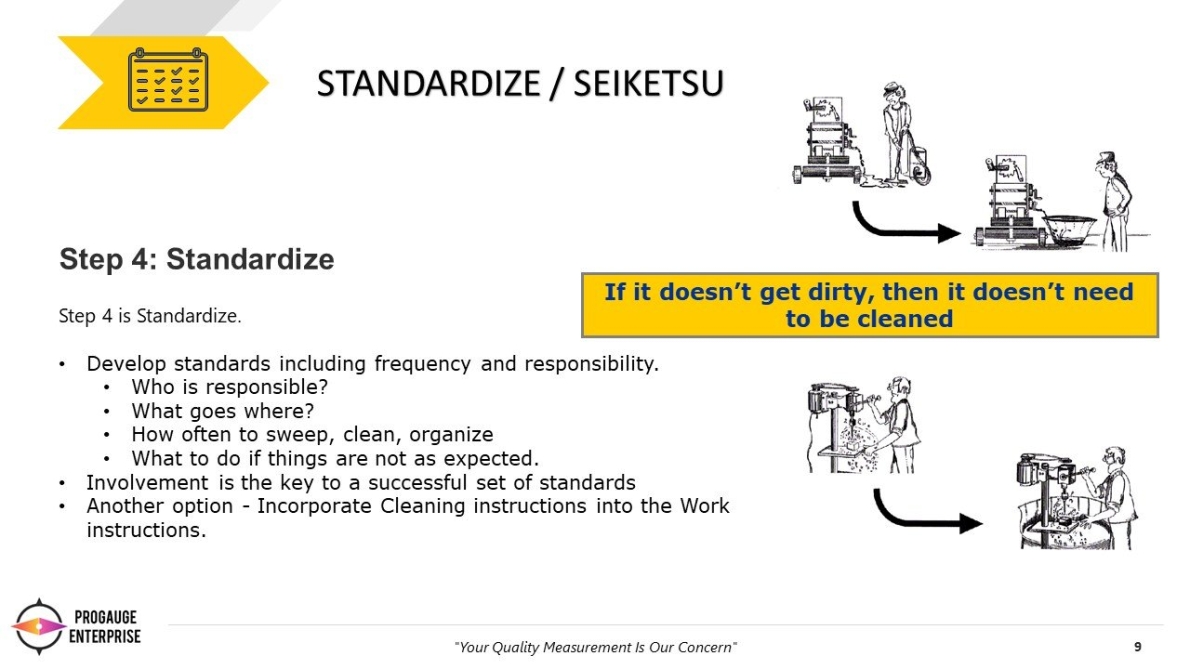5S Series - Standardize
15 Jan 2021


View Full Size
We continue to the 4th Step which is the Standardize or in Japanese name it as Seiketsu.
We have cover the three steps of 5S cover the basics of clearing, organizing, and cleaning a work space; on their own, those steps will provide short-term benefits. The fourth step is as well important we name it as Standardize, or “seiketsu,” which simply means standardization.
By writing down what is being done, where, and by whom, you can incorporate the new practices into normal work procedure. This paves the way for long-term change.
Record down the decisions that you make in your 5S program will help ensure that your work doesn’t just disappear. If you made a 5S map in the Set In Order step, that map can be part of your new standard for the area. In the same way, the process that you use for red-tagging items can be written down and included in the standards.
Writing out your decisions doesn’t mean you can’t change your mind, though. The purpose of 5S is to make your workplace better, not to make it unchangeable. You are writing the standards for your facility, and you can change them to fit new information or new business needs.
Below are some tools for Standardizing that you may use at your work practices,
This communication is a key part of the Standardize step. Common tools for this process include:
5S able to improve your facilities and improve working environment.
We have cover the three steps of 5S cover the basics of clearing, organizing, and cleaning a work space; on their own, those steps will provide short-term benefits. The fourth step is as well important we name it as Standardize, or “seiketsu,” which simply means standardization.
By writing down what is being done, where, and by whom, you can incorporate the new practices into normal work procedure. This paves the way for long-term change.
Record down the decisions that you make in your 5S program will help ensure that your work doesn’t just disappear. If you made a 5S map in the Set In Order step, that map can be part of your new standard for the area. In the same way, the process that you use for red-tagging items can be written down and included in the standards.
Writing out your decisions doesn’t mean you can’t change your mind, though. The purpose of 5S is to make your workplace better, not to make it unchangeable. You are writing the standards for your facility, and you can change them to fit new information or new business needs.
Below are some tools for Standardizing that you may use at your work practices,
This communication is a key part of the Standardize step. Common tools for this process include:
- 5S checklists – Listing the individual steps of a process makes it easy for workers to follow that process completely. It also provides a simple auditing tool to check progress later on.
- Job cycle charts – Identify each task to be performed in a work area, and decide on a schedule or frequency for each of those tasks. Then, assign responsibility to a particular worker (or job duty). The resulting chart can be posted visibly to resolve questions and promote accountability.
- Procedure labels and signs – Provide operating instructions, cleaning steps, and preventative maintenance procedures right where that information will be needed.
5S able to improve your facilities and improve working environment.


